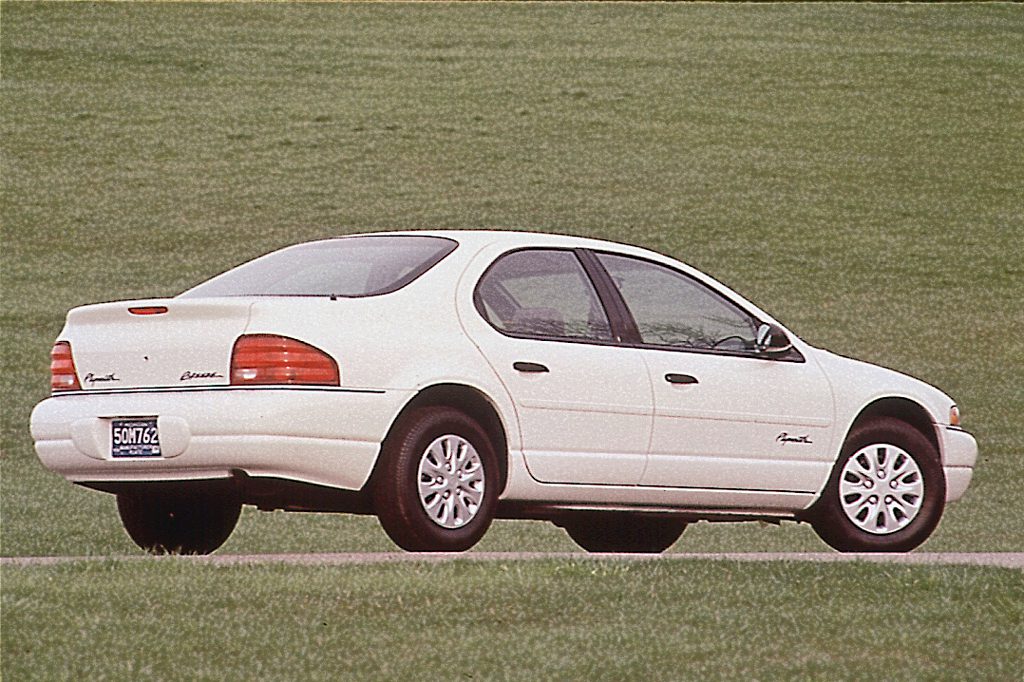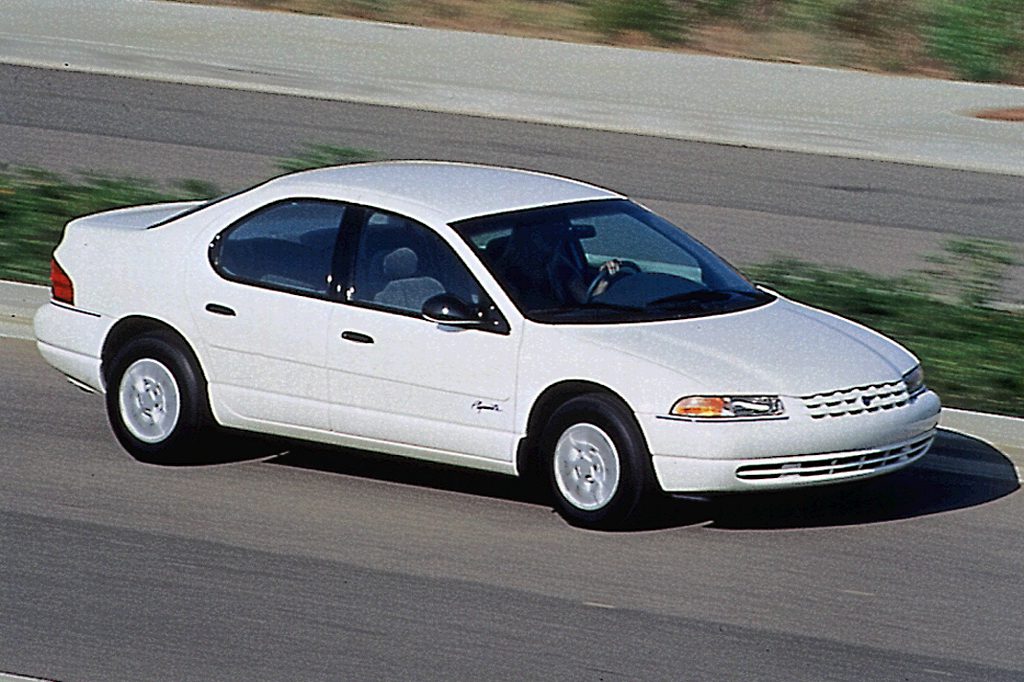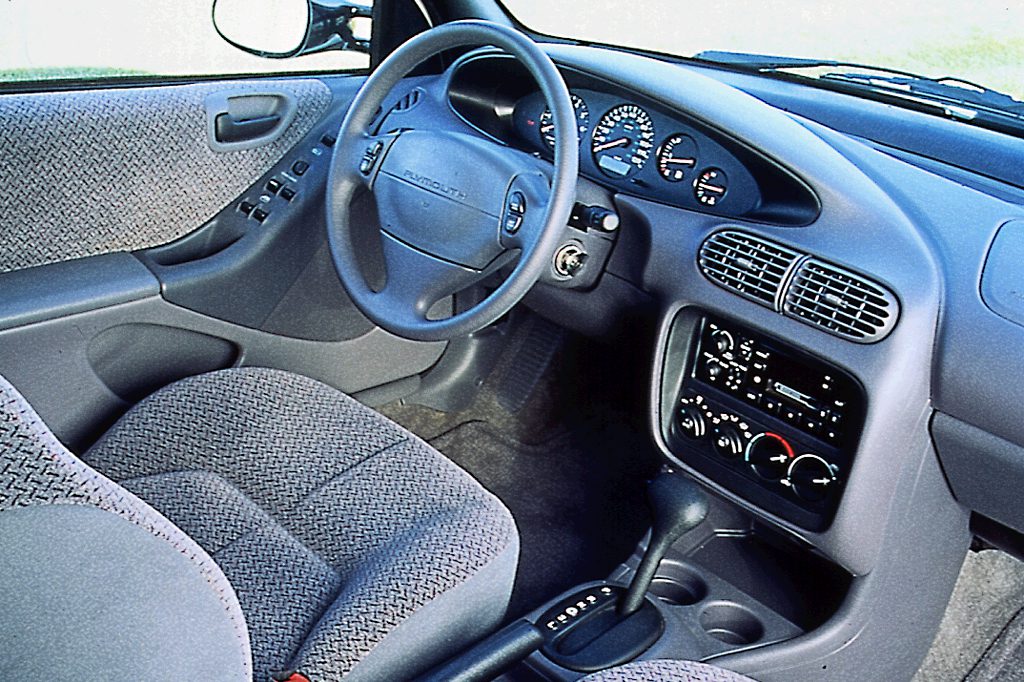| Midsize car; Built in USA |
|
|
| Good condition price range: $1,000 – $2,200* |

1997 Plymouth Breeze

1997 Plymouth Breeze

1996 Plymouth Breeze

1996 Plymouth Breeze interior

1996 Plymouth Breeze
| Pros: |
|
| Cons: |
|
Less costly than many Japanese rivals, the competent Breeze also is better equipped and roomier than some other family sedans.
Overview
Intended as the lower-priced entrant into the midsize market, Breeze was the third version of Chrysler Corporation’s JA front-drive sedan. Breeze is similar to the Dodge Stratus and Chrysler Cirrus. Only one engine was available initially: a 132-horsepower, 2.0-liter 4-cylinder, with a standard 5-speed manual transmission or optional 4-speed automatic. Standard equipment included dual airbags, air conditioning, an AM/FM stereo unit power steering, and rear defroster. Antilock braking was optional, as was an integrated rear child seat.
Yearly Updates
| 1997 Breeze Only a few changes were evident in 1997 models. A new console included storage, an integrated armrest, and cupholders for rear-seat occupants. |
| 1998 Breeze A bigger, more-potent engine became available this year. The dual-overhead-cam 2.4-liter 4-cylinder made 150 horsepower, versus 132 for the basic 2.0-liter. Only an automatic transmission could be installed with the larger engine. |
| 1999 Breeze Revised suspension tuning for 1999 promised a smoother ride, but little other change was evident. |
| 2000 Breeze Breeze production halted early in 2000, as part of the phase-out of the Plymouth brand name. One trim level remained for this partial final season. |
